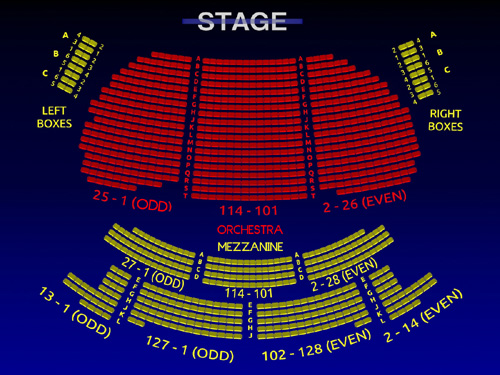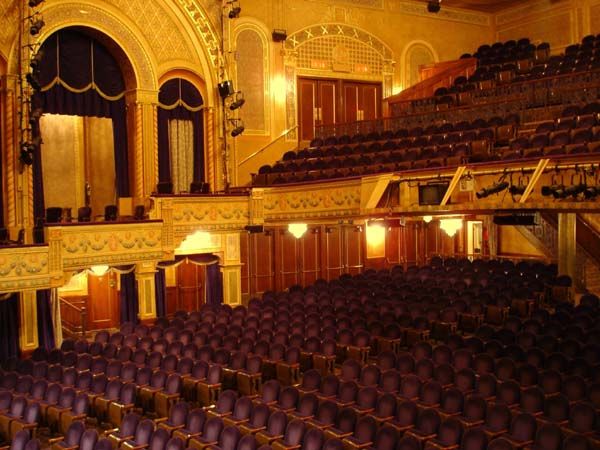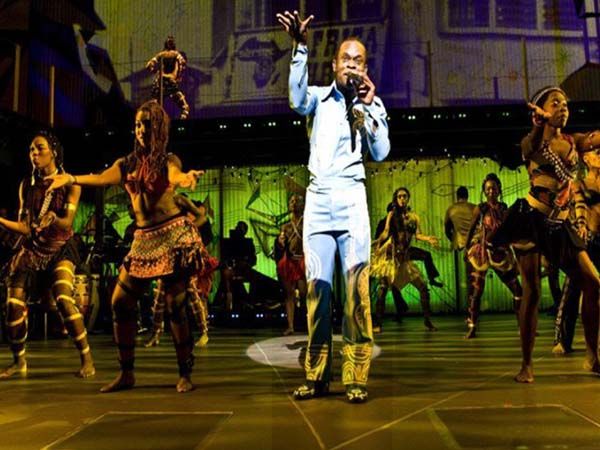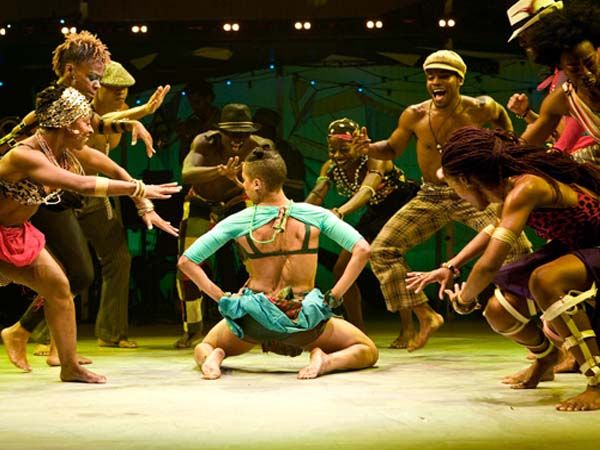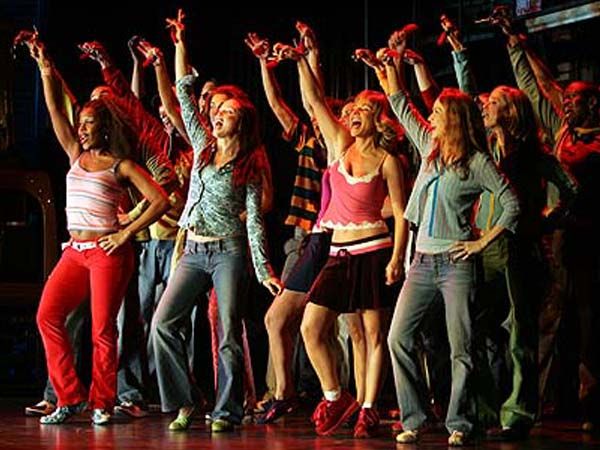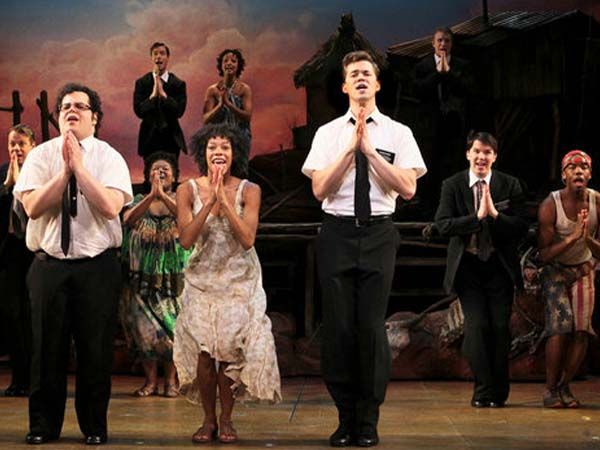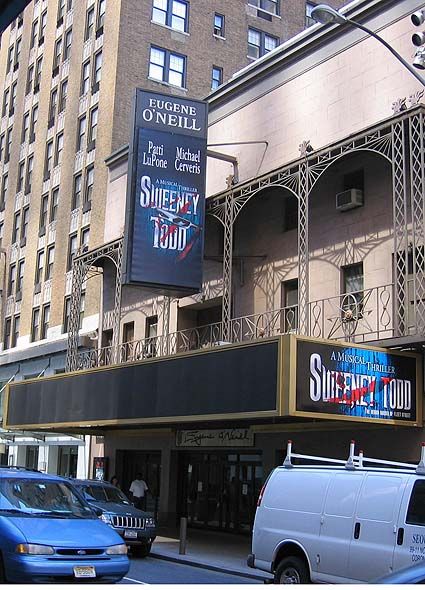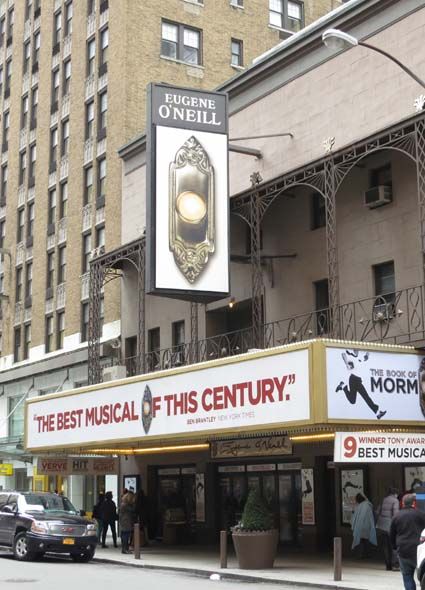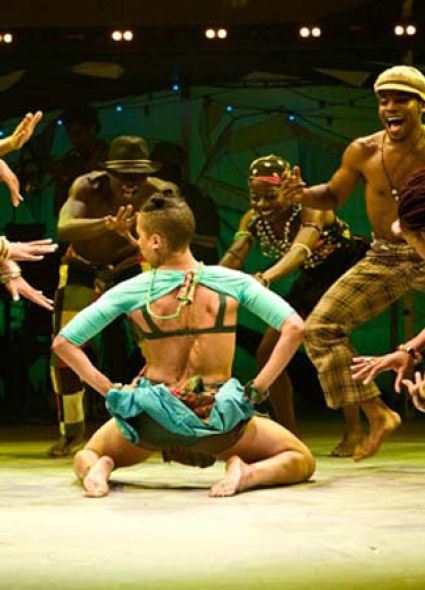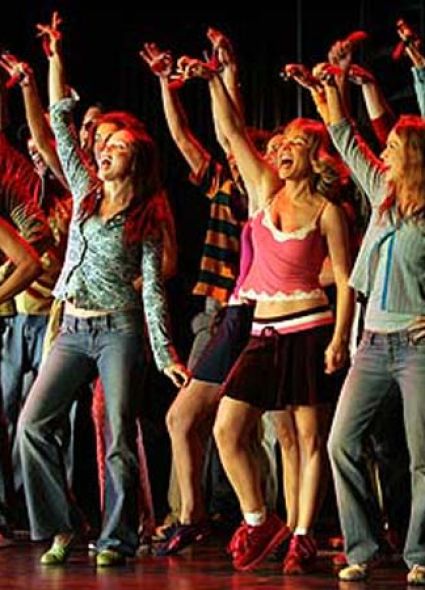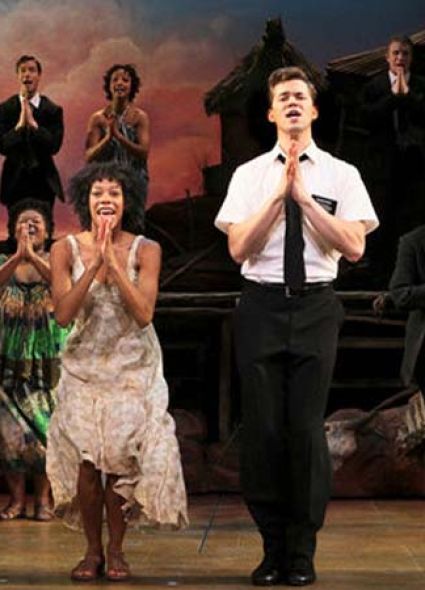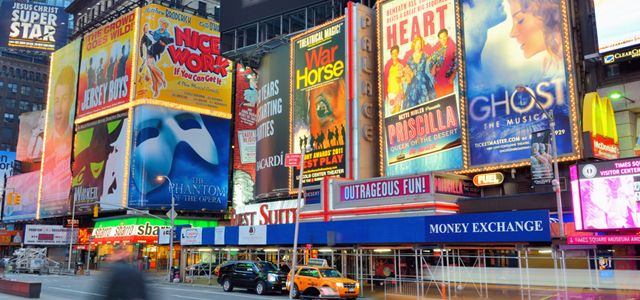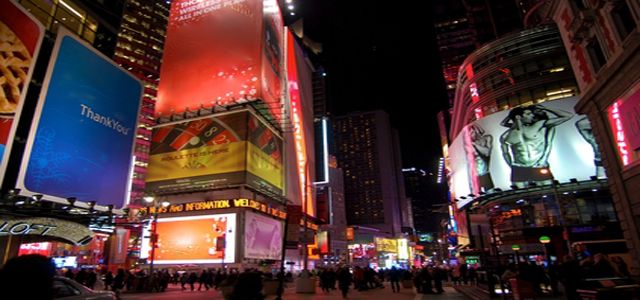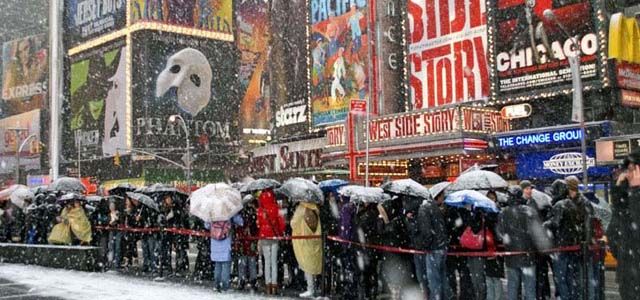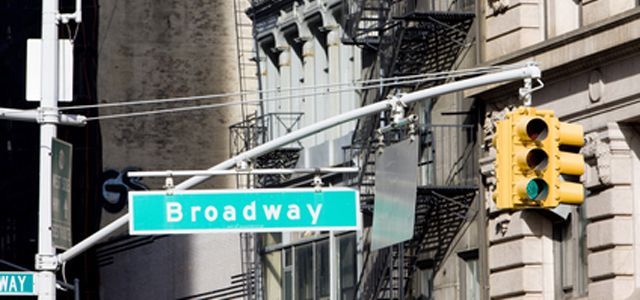The Eugene O’ Neill Theatre
 The Eugene O’ Neill Theatre was designed by architect Herbert J. Krapp for the Shuberts. Originally named the Forrest Theatre, the venue was constructed as part of a theatre-hotel facility named in honor of nineteenth century American Shakespearean actor Edwin Forrest.
The Eugene O’ Neill Theatre was designed by architect Herbert J. Krapp for the Shuberts. Originally named the Forrest Theatre, the venue was constructed as part of a theatre-hotel facility named in honor of nineteenth century American Shakespearean actor Edwin Forrest.
Notable History
On November 24, 1925, the Forrest opened with the musical Mayflowers featuring an unknown actress, Nancy Carroll (who would eventually become a movie star). In 1927, a drama called Women Go On Forever starring Mary Boland, Osgood Perkins, David Montgomery, and James Cagney had a great amount of success at the theatre. Edgar Wallace’s On the Spot opened in October 1930; at the time, it was the Forrest’s most triumphant show.
In 1932, The Good Fairy transferred from Henry Miller’s Theatre and ran for two months. In September 1934, Jack Kirkland’s Tobacco Road opened and became a major hit. The 1940s saw successful transfers from other Broadway theatres, including Three Men on a Horse and Claudia.
In 1945, the theatre was restored and rechristened the Coronet. The Coronet’s second show, Elmer Rice’s captivating Dream Girl, was a smash. It was written for Rice’s wife, Betty Field, and she gave an enchanting performance as a woman who invigorated her life with vibrant daydreams. All My Sons, Arthur Miller’s first successful drama, opened in the space in January 1947. Also in 1947, Angel in the Wings, a revue, added an enjoyable contrast to the season. It featured Paul and Grace Hartman, the compelling dance comedians, supported by the inimitable Elaine Stritch among others.
In 1950, the smash revue, Tickets, Please! starring the Hartman dancers, was staged at the Coronet. Other notable productions of the 1950s included Samson Raphaelson’s Hilda Crane with Jessica Tandy, Beulah Bondi, Evelyn Varden, Eileen Heckart, and John Alexander; Frederic March, Florence Eldridge, Jane Wyatt, and Ethel Griffies in Lillian Hellman’s enthralling play The Autumn Garden; S.N. Behrman’s Jane featuring Edna Best in an unforgettable role; and Patricia Neal, Kim Hunter, Robert Pastene, and Iris Mann in a revival of Lillian Hellman’s first major drama The Children’s Hour.
In 1959, the Coronet was renamed the Eugene O’ Neill in honor of the American playwright. This occurred after one of his hit plays, The Great God Brown, was revived at the theatre. Playwright Neil Simon bought the theatre in the 1960s and a string of his plays were staged there. In 1975, Isaac Bashevis Singer and Leah Napolin’s Yentl featuring Tovah Feldshuh opened.
Neil Simon leased the venue to Jujamcyn Theaters in 1982. The musical Big River became a big hit when the Des McAnuff production opened in 1985. The musical was based on Mark Twain’s The Adventures of Huckleberry Finn. The production won several Tony Awards: Best Musical, Best Book, Best Score, Best Direction, Best Scenic Design, and Best Lighting. Ron Richardson won a Tony for Best Featured Actor as well. Arthur Miller’s highly-praised Death of a Salesman was presented at the theatre in 1999 with Brian Dennehy playing Willie Loman. Dennehy won the first of his two Tonys for his effort.
One of Broadway’s Finest Theatres
The Eugene O’ Neill was designed in the Georgian style. The house can accommodate up to 1,200 patrons, making it adaptable for the presentations of dramas or musical comedies. In 1945, the venue underwent a thorough renovation. The new managers turned the rechristened Coronet Theatre into a striking space covered with glossy gray draperies, and it became known as one of the finest Broadway theatres.
From Flops to Fame
Although in its earlier years while under different names, the Eugene O’ Neill was home to many flops, today it is one of the most sought-after venues on Broadway. It has housed a variety of popular shows such as the hilarious musical The Book of Mormon, the edgy dramatic musical Spring Awakening, and the revival of the highly theatrical Nine.

